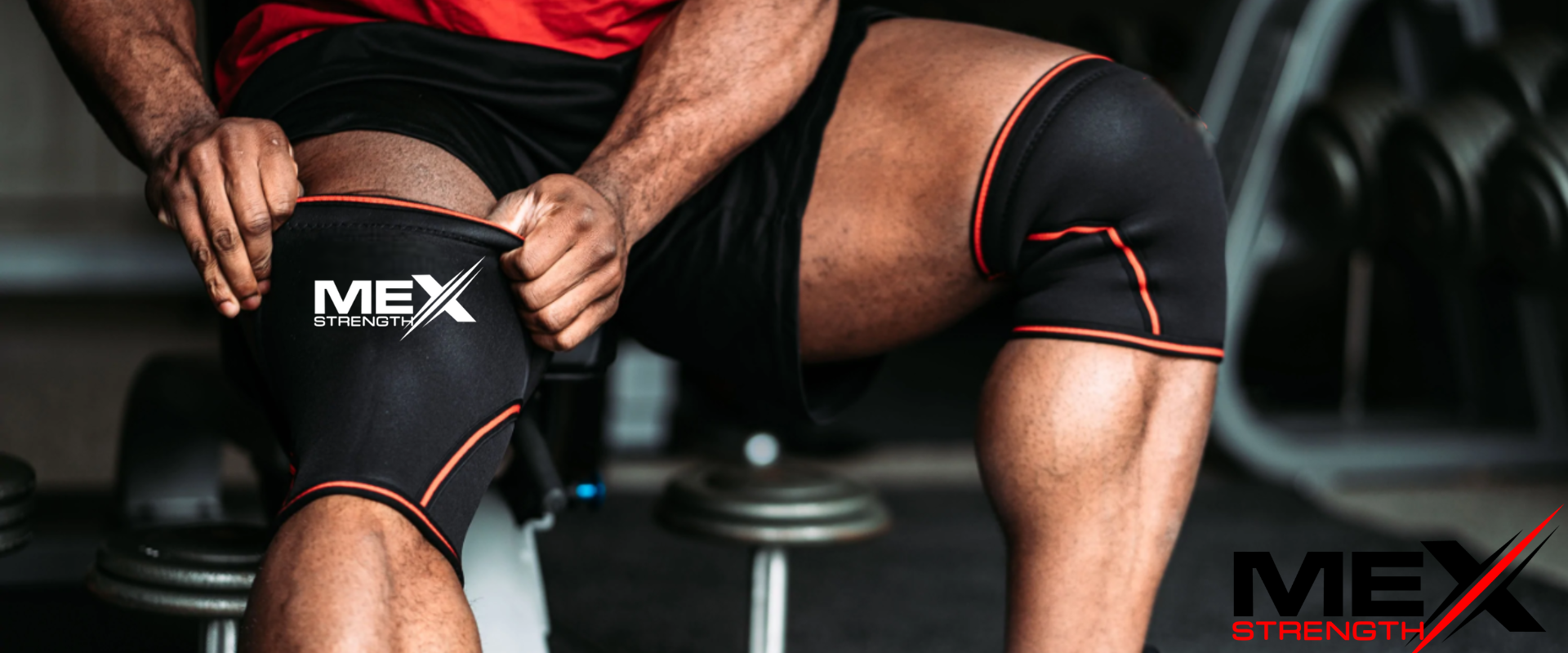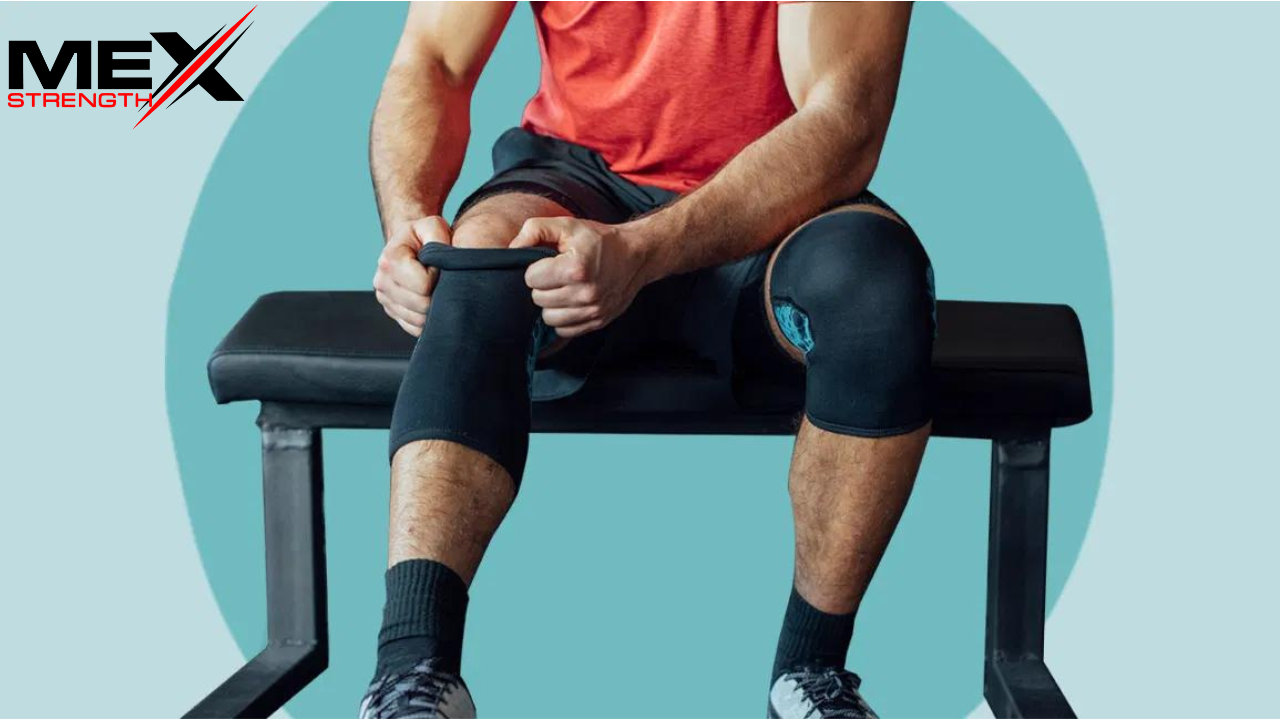Knee sleeves can help to reduce joint pain, improve movement and athletic performance by offering protection against strain injuries, and keep joints warm while they’re moving.
Knee sleeves are a famous choice for many people around the world including athletes who want to protect their knees during heavy lifting or workouts. But what exactly are the benefits of using knee sleeves?
In this blog post, we’ll discuss the important benefits of knee sleeves, the types of knee sleeves, and how they can help users to improve their knee health.
What Are Knee Sleeves?
Knee sleeves are an effective solution for individuals who experience discomfort and swelling in their knees. These compression sleeves are designed to provide targeted support and compression to the knee joint, helping to alleviate pain and promote faster recovery. The special bandage material used in knee sleeves is designed to create a secure and comfortable fit, ensuring that the sleeve stays in place even during rigorous physical activity. Whether you’re an athlete looking to prevent knee injuries or someone with chronic knee pain, knee sleeves are a valuable tool for improving your overall knee health and reducing discomfort.
How To Wear Knee Sleeves?
Firstly, knee sleeves can be worn over pants or directly against the skin, depending on your personal preference. It’s worth noting that wearing knee sleeves directly against the skin may provide a more secure fit and increased compression. Secondly, some knee sleeves feature a removable liner that makes it easy to wash and maintain them. This is particularly important for individuals who use knee sleeves frequently or engage in activities that cause excessive sweating. Lastly, it’s essential to choose the correct size and style of knee sleeve to ensure a proper fit and optimal benefits. Whether you’re looking to support your knee during workouts or manage chronic knee pain, wearing knee sleeves correctly can help improve your overall knee health and performance.
How Its Made
The manufacturing process of knee sleeves typically involves several steps. First, the high-quality materials are sourced and inspected to ensure they meet the required standards. The materials are then cut into the desired size and shape using specialized equipment. Next, the pieces are sewn together, with additional features like pockets or reinforced stitching added as needed.
The completed knee sleeves are then washed and inspected for quality before being packaged and shipped to customers. Some manufacturers also use specialized treatments or coatings to enhance the durability and performance of the knee sleeves. Overall, the process of making knee sleeves requires attention to detail and quality control to ensure that the final product is comfortable, supportive, and effective for its intended use.
Types Of knee Sleeves
Knee sleeves are available in a wide variety of types and materials to suit different needs and preferences. Here are some of the most common types of knee sleeves:
- Neoprene knee sleeves: Made from a synthetic rubber material, neoprene knee sleeves provide compression and warmth to the knee joint, which can help to reduce pain and inflammation. They are commonly used by athletes and people with knee injuries.
- Nylon knee sleeves: Lightweight and breathable, nylon knee sleeves provide support to the knee joint without adding bulk. They are often used for light exercise or as a preventive measure to reduce the risk of knee injuries.
- Copper-infused knee sleeves: These sleeves are made with copper threads woven into the fabric, which can help to reduce inflammation and pain in the knee joint. They are often used by people with arthritis or other inflammatory conditions.
- Gel knee sleeves: These knee sleeves have gel pads in specific places to provide extra support and cushioning to the knee joint. They are often used by people with knee injuries or those who engage in high-impact activities.
- Adjustable knee sleeves: These sleeves contain straps that can be adjusted to provide a customized level of compression and support to the knee joint. They are often used by people with knee injuries or those who need extra support during physical activity.
- Open-patella knee sleeves: These sleeves have a cut-out around the kneecap, which can help to reduce pressure on the patella and provide support to the knee joint. They are often used by people with patellar tracking issues or other knee conditions that affect the kneecap.
Overall, the type of knee sleeve you choose will depend on your specific needs and preferences, as well as the type of physical activity you engage in. It’s always important to consult a healthcare professional before using a knee sleeve, especially if you have a pre-existing knee condition or injury.
Benefits Of Wearing Knee Sleeves
There are many benefits of knee sleeves. Let’s discuss them one by one.
Compression
The compression provided by knee sleeves can help to improve blood flow to the knee joint, which can promote healing and recovery. It can also help to reduce inflammation by compressing the soft tissues around the knee, which can help to prevent fluid buildup and swelling. Additionally, compression can help to improve proprioception, which is the ability to sense the position and movement of the knee joint. This can improve overall stability and reduce the risk of injury during physical activity.
Support
Knee sleeves provide support to the knee joint, which can help to improve overall stability and prevent injuries. The support provided by knee sleeves can help to keep the knee joint in proper alignment, which can reduce stress and strain on the joint and surrounding tissues. This can be especially beneficial for people who have experienced knee injuries or who have conditions that affect the stability of the knee joint, such as ligament tears or arthritis.
By providing support, knee sleeves can also help to improve balance and reduce the risk of falls and other accidents during physical activity. Additionally, knee sleeves can help to reduce fatigue in the knee joint by absorbing some of the shock and impact that occurs during activities like running or jumping. Overall, the support provided by knee sleeves can help to improve comfort and performance during physical activity while also reducing the risk of injury.
Warmth
Knee sleeves can provide warmth to the knee joint, which can be beneficial for people who experience pain or stiffness in the knees due to conditions like osteoarthritis or tendonitis. The warmth provided by knee sleeves can help to improve blood flow to the knee joint, which can promote healing and reduce pain and stiffness. It can also help to soothe sore muscles and reduce muscle spasms in the knee area.
Additionally, the warmth provided by knee sleeves can help to improve flexibility in the knee joint by loosening up the soft tissues around the knee. This can be especially beneficial for people who participate in physical activities that require a lot of bending and flexing of the knees, such as squats or lunges. Overall, the warmth provided by knee sleeves can help to improve comfort and range of motion in the knee joint while also reducing pain and stiffness.
Pain Relief
Knee sleeves can provide pain relief to people who experience knee pain due to various conditions. The compression provided by knee sleeves can help to reduce pain and swelling in the knee joint by promoting blood flow and preventing fluid buildup. The warmth provided by knee sleeves can also help to soothe sore muscles and reduce pain and stiffness.
In addition, knee sleeves that are infused with copper or other anti-inflammatory materials can provide extra pain relief by reducing inflammation and promoting healing. People who have conditions like osteoarthritis, tendonitis, or patellar tracking disorder can benefit from using knee sleeves for pain relief. However, it’s important to note that knee sleeves are not a substitute for medical treatment and should be used in conjunction with other treatments recommended by a healthcare professional.
Rehabilitation
Knee sleeves can be used as part of a rehabilitation program for people recovering from knee injuries or surgeries. The compression provided by knee sleeves can help to reduce pain and swelling, which can be especially beneficial during the initial stages of recovery. Additionally, the warmth provided by knee sleeves can help to improve blood flow to the knee joint, which can promote healing and speed up recovery time.
Knee sleeves can also provide support to the knee joint during rehabilitation exercises, which can help to prevent further injury and promote safe and effective movement. People who have undergone knee surgeries, such as ACL reconstruction or meniscus repair, can benefit from using knee sleeves during rehabilitation. However, it’s important to follow the guidance of a healthcare professional and use knee sleeves as part of a comprehensive rehabilitation plan.
Prevention
Knee sleeves can be used as a preventative measure for people who are at risk of developing knee injuries, such as athletes or individuals with pre-existing knee conditions. By providing compression and support to the knee joint, knee sleeves can help to reduce the risk of injury during physical activity. Additionally, knee sleeves can help to promote proper alignment and movement patterns, which can also reduce the risk of injury. For example, runners may use knee sleeves to help prevent knee pain or IT band syndrome, while weightlifters may use knee sleeves to prevent knee injuries during heavy lifts. It’s important to choose the right type of knee sleeve for the specific activity and to ensure proper fit to maximize the preventative benefits.
Improved Performance
Knee sleeves can help improve performance in certain activities. By providing compression and support to the knee joint, knee sleeves can help improve proprioception, which is the body’s awareness of its position and movement in space. This can help improve balance and stability during physical activity, allowing individuals to perform movements more efficiently and effectively.
Additionally, the warmth provided by knee sleeves can improve muscle flexibility and range of motion, which can also improve performance. For example, weightlifters may use knee sleeves to improve their squat form and increase the weight they can lift, while basketball players may use knee sleeves to improve their jump height and agility on the court. It’s important to choose the right type of knee sleeve for the specific activity and to ensure proper fit to maximize the performance benefits.
Note: It’s important to note that knee sleeves should be used in conjunction with other treatments and not as a sole treatment for knee pain or injury. Consult with a doctor or physical therapist before using knee sleeves for injury.
Summary
Knee sleeves are a type of compression sleeve that can be worn to provide support, warmth, pain relief, and improved performance to the knee joint. There are several types of knee sleeves, including neoprene, nylon, copper-infused, gel, adjustable, and open-patella. While knee sleeves can be helpful for those with knee pain or injuries, they should be used in conjunction with other treatments and not as a sole treatment. It is important to choose the right type of knee sleeve for your needs and consult with a healthcare professional if you have any questions or concerns. For more details visit our website.






Leave a comment